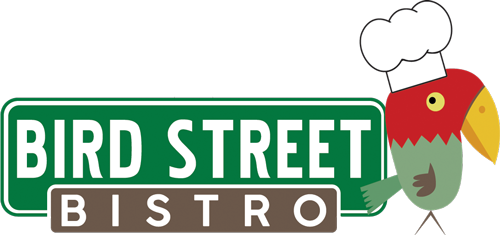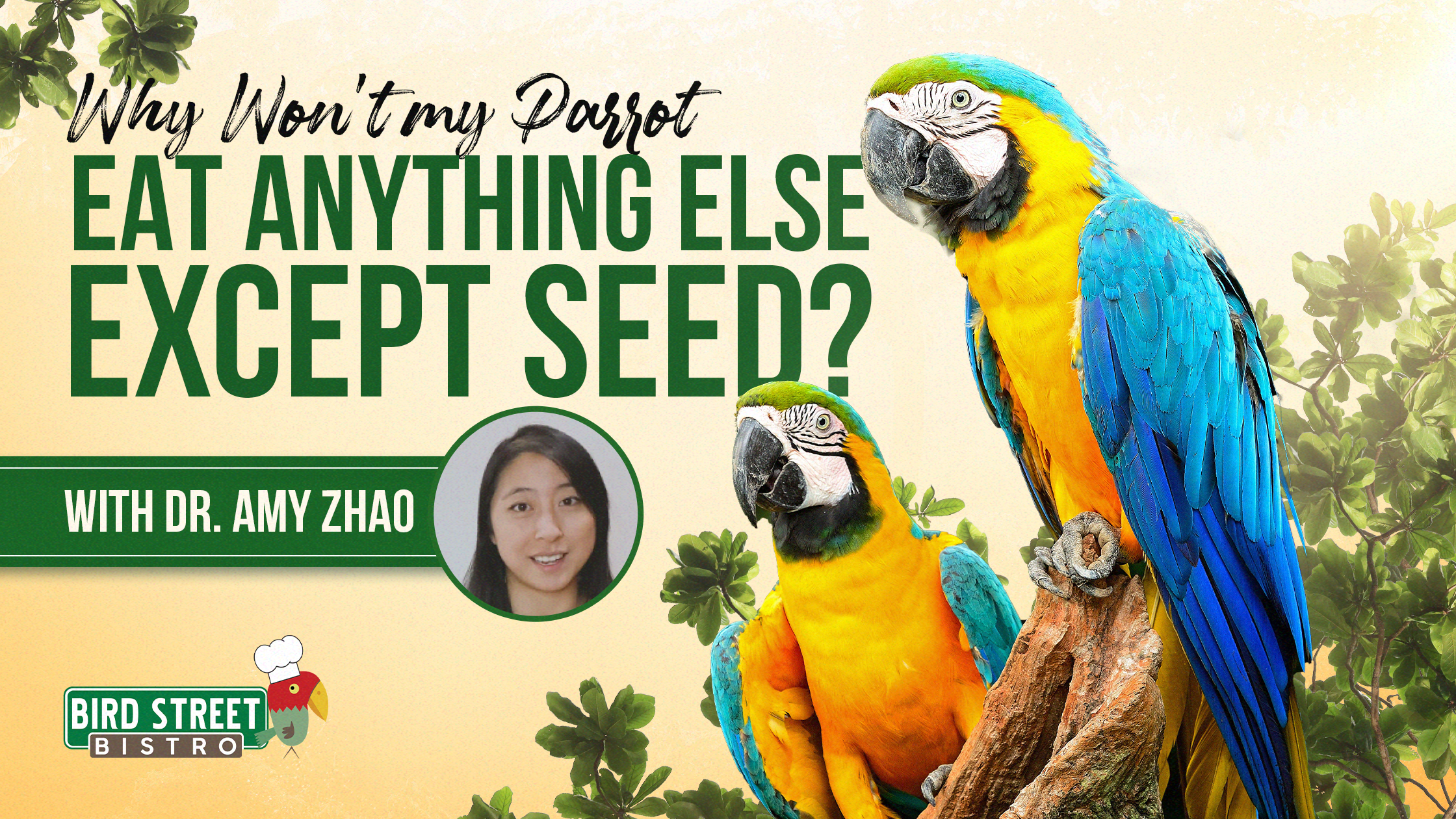Why won’t my parrot eat anything else except seed?
The Biology Holds the Key
Anytime you’re looking to decipher behavior in animals, it is always a good idea to look at their biology. What instinct has been coded in their genetic material and what role does that biology play for them in their natural habitat? Once we know that, we can look at our parrots in captivity and find a solution that works with instead of against their biology.
How Parrots Learn to Identify Food
In the wild, parrots hatch from the egg and are fed by the parents in the
nest. They are unable to provide for themselves and rely completely on their parents to go out, find food, return, and regurgitate it to them. As they grow old enough to fledge from the nest, they stay with their parents and family group, observing and copying everything they do and eat. During this period of their life, juvenile parrots learn how to identify edible items amongst the wide variety of foliage that exists around them. Not all foliage is edible or even safe to eat. Many plants are toxic and those need to be avoided. The juveniles watch their parents and consume the same items they consume, copying and mimicking their foraging activities and learning to identify those specific items as food. This is a crucial learning period for these animals in which they learn what is food and what isn’t.
They also observe and learn how each food item is meant to be consumed. Do they eat the leaf? The stem? The flowers? The buds? Or is it a nut that should be broken open? The instinct of the bird does help them think about how they might interact with a food item but watching their parents during this crucial learning period plays a major part in solidifying these behaviors.
For many parrot species, this is typically in the range of several months’ time. However, this crucial learning period can be up to 1-2 years for some of the largest parrot species that take the longest to mature.
In addition to this crucial learning period, parrots can continue to learn to identify new food items throughout their life. They can do this in many ways.
- Parrots are flocking animals and have extremely strong observational learning skills. Many parrots quickly learn to eat new foods when they see a bonded partner eating it.
- They associate certain locations with food and might be willing to try new items presented in similar ways as food they already know
- They’re more likely to try foods that look very similar to something they already recognize.
How does this relate to our captive parrots?

Food identification relies heavily on their vision, which is one of the parrot’s most dominant and crucial senses. Unlike dogs who rely heavily on their sense of smell to navigate the world around them and to identify food, parrots rely heavily on their vision to identify food items. This means that food has to look like something they recognize in order for them to know they can eat it.
For many of our captive parrots, a substantial portion of their critical learning period falls within their time at the breeder. Unfortunately, most breeders today are still breeding birds using extremely outdated practices and are weaning their fledglings onto a limited diet rather than introducing a wide variety of food items. When they arrive in their new home, they might not recognize any other foods other than what they’ve already been fed. They’ve never seen these items before and have no idea that these new items are food. In addition, they struggle to learn new foods because they are missing a crucial piece of the puzzle—their family group. (Most parrots are going home as very young juveniles which have not completed their natural crucial learning period with their parents.) This means many parrots will refuse to eat or even starve to death rather than eat something they don’t recognize. They’re not being stubborn or spoiled. They simply don’t understand that these items being offered are food.
So Is It Too Late?
It is never too late to introduce new foods to your parrot. It may take longer for some individual parrots compared to others depending on their personality and environmental factors but every parrot is capable of learning through the entire length of their lifespan. The key is to observe your parrot’s tendencies and preferences so that you can offer the food in a way that makes sense to them.
How can we move forward?
Now that we know the main obstacle, we can address it very effectively. If the
- Start with foods that look like what they already recognize. This is one of the reasons why Bird Street Bistro is a fantastic place to start introducing new foods to your birds. It is a mixture of cooked grains that look very similar to something they already recognize so they will be more willing to give it a try when offered.
- Start with things that taste good! Parrots are smart and some are less adventurous than others. If they’ve never tried a new food in their life and the first time (or every time) they try something new it doesn’t taste very good, they can get frustrated. Bird Street Bistro mixes have parrot-safe spices added which means they taste great on the first bite (aka they have high palatability) which will encourage them to go back for more and be excited about it.
- Allow for social eating! If your parrot is bonded to another parrot in the home, serve the Bird Street Bistro on a flat plate or surface so both can access the food together. If your parrot often is interested in your human food, you can even put it on a plate and pretend to eat it. Social eating behavior is one of the parrot’s most effective and instinctual learning strategies. This is especially true of parrots with extremely strong flocking instincts like budgies.
- Offer it somewhere familiar. If your parrot usually gets food in a specific bowl, offer it to them in that same bowl. This will help hint to them that this new item is very likely to be food and that they should give it a try.
- Choose the appropriate size.
- Often when people offer new foods, they present the parrot with a giant pile of food. Because many parrots are afraid of new items, offering a big pile of new food can be quite scary to them, especially if you have a smaller parrot. When you first offer, offer as much as they can eat in one sitting just so it’s not so intimidating. You can always add more if they finish the first serving and want more!
- If you have a smaller parrot, consider chopping the food down into smaller pieces. Smaller parrots like budgies or cockatiels might find whole lentils a bit hard to eat so giving it a quick chop to make the pieces smaller can make the food less intimidating to eat.
- Slowly introduce fresh produce. Bird Street Bistro is a fantastic way to introduce fresh produce to a parrot. Pick just 1-2 items, chop it down very fine and mix it with the Bird Street Bistro. If they’re willing to eat it, consistently offer it with the new item mixed in until they’re confidently eating it before moving onto some different items.
- This is a great way to introduce leafy greens like dandelion greens, bok choy, chard, kale, and more!
- Once your parrot learns to love the Bird Street Bistro food, you can even use fresh produce to present it in fun ways. Wrap the food into a piece of kale or stuff a small pepper with it. This can be a fun and interactive way to introduce fresh produce using Bird Street Bistro.
- Choosing a selection results in a full page refresh.
- Press the space key then arrow keys to make a selection.


